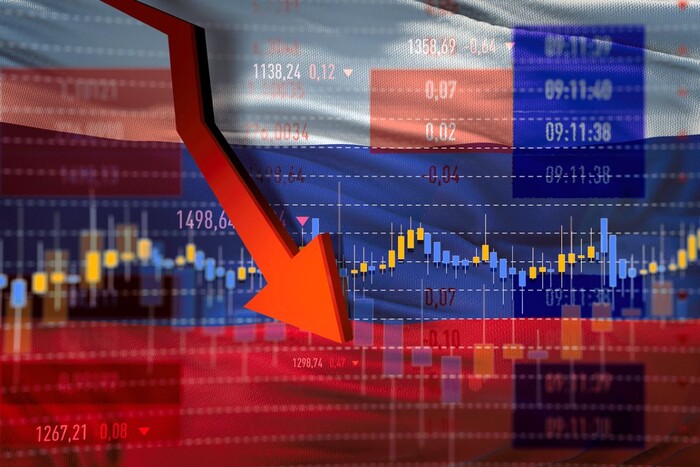- A decline in
industrial production, especially in civilian sectors not linked to
the defense industry.
- A slowdown in
consumer demand — retail trade is stagnating, and Russians are
increasingly forgoing large purchases.
- Persistently high inflation,
exceeding 9.2% since the
beginning of the year, while real household incomes remain under pressure.
- Fiscal consolidation
challenges — the state budget is facing a deficit despite high
export revenues from oil and gas, as spending on the military, social
support, and import substitution continues to grow.
Russia’s Economy Slips into Stagnation — Recession on the Horizon

The Russian economy is showing alarming signs of slowdown
and exhaustion of its previous growth model, which was based on mobilization
resources and military spending. This is stated in an analytical article published
by The Wall Street Journal,
citing macroeconomic data and expert assessments.
Key symptoms include:
The Central Bank of
Russia maintains a high key
interest rate of 16.5%, which curbs inflation but also limits private investment. Banks are
reluctant to lend, particularly outside the defense sector, and small and
medium-sized businesses continue to report a lack of accessible financing.
According to WSJ
experts, the Russian economy could enter a technical recession by autumn 2025, unless structural reforms and
an increase in private initiatives are undertaken. The report argues that the “war economy” model, which fueled
growth in 2022–2024 through defense contracts and infrastructure programs, has
run its course.
“Domestic consumption was supposed to replace lost external demand, but the population’s purchasing power hasn’t recovered after the COVID and sanctions shocks”,
says Natalia Orlova, an economist at the University of Economics and Politics in London.
“Russia is caught in a trap of high deficits and low business activity”, adds Michael Lerner, an analyst at WSJ.
Thus, while businesses
are hoping for a rate cut, the Central
Bank has not signaled any easing of its monetary policy. Pressure on the ruble is mounting:
demand for foreign currency is growing on the domestic market, and
international reserves are gradually declining. Fiscal and tax policy
adjustments may follow in the autumn — in the run-up to the 2026 elections.
Source: The Wall Street Journal
 Latest news
Latest news Latest news
Latest newsTrump and Putin Prepare to Meet Ahead of Zelensky’s White House Visit: A New Phase of Diplomacy or Pressure on Kyiv?
17.Oct.2025
A Shadow over the Russian-Azerbaijani Thaw: What Lies Behind the Arrest of Former Presidential Chief of Staff Ramiz Mehdiyev?
16.Oct.2025
Russia and Syria: A New Chapter in Relations After the Coup
16.Oct.2025
NATO and EU Join Forces to Build a “Drone Wall”
15.Oct.2025
Trump: New bonds of friendship to join Armenia to Azerbaijan
14.Oct.2025
UK to lift its arms embargo on Armenia, Azerbaijan
14.Oct.2025
Russia Opens New Criminal Case Against Opposition Figure Khodorkovsky
14.Oct.2025
Expert analysis by Tigran Khzmalyan: If Pashinyan wins again, Armenia will fall completely under Russia’s influence
14.Oct.2025
The Kremlin Warns the West of Dangerous Escalation: U.S. Plans to Supply Tomahawk Missiles to Ukraine
12.Oct.2025
Moscow Admits Guilt for Downing Azerbaijani Plane: Putin and Aliyev Show “Mutual Understanding of Authoritarian Allies”
10.Oct.2025

 21 Oct 2025
21 Oct 2025








